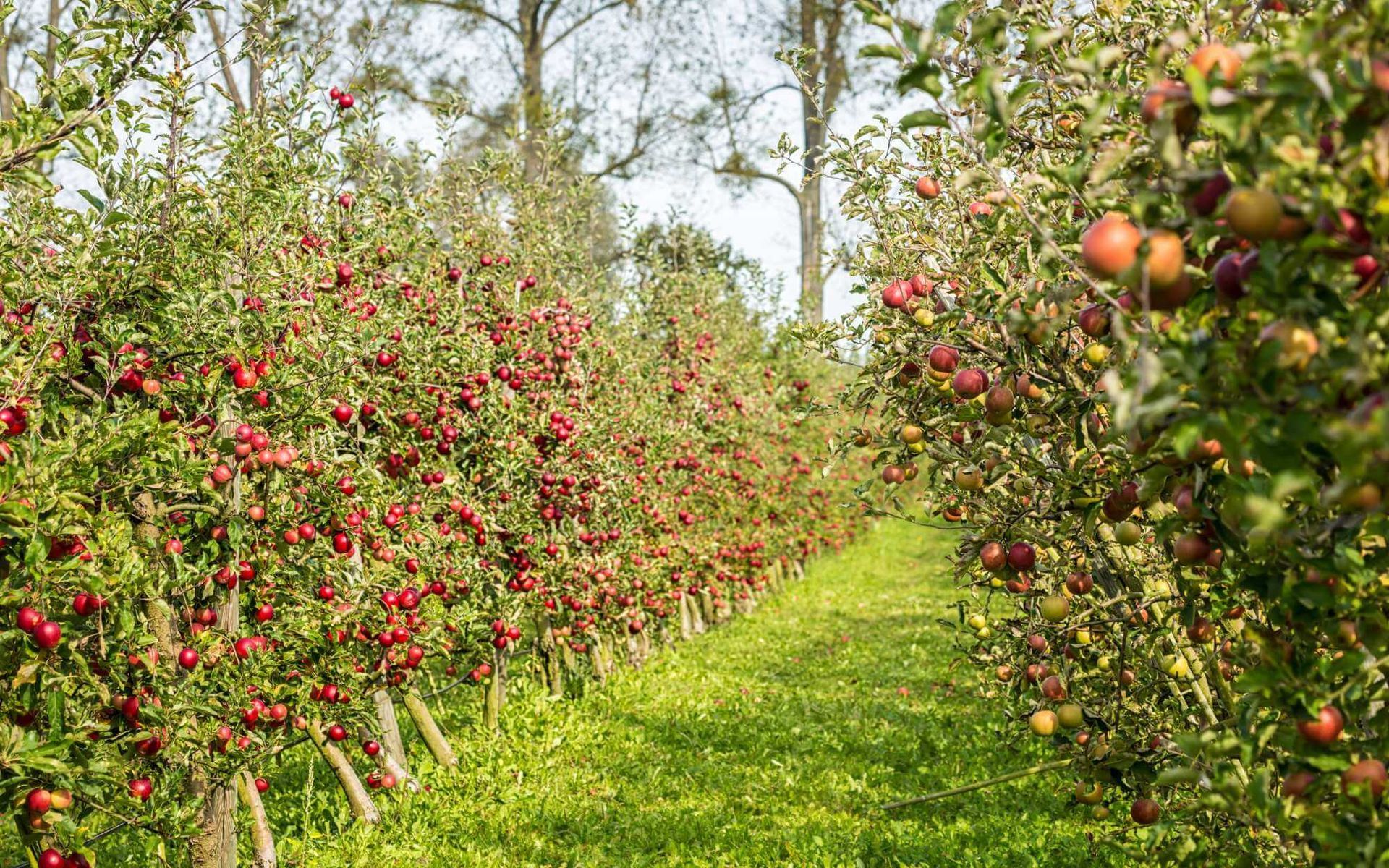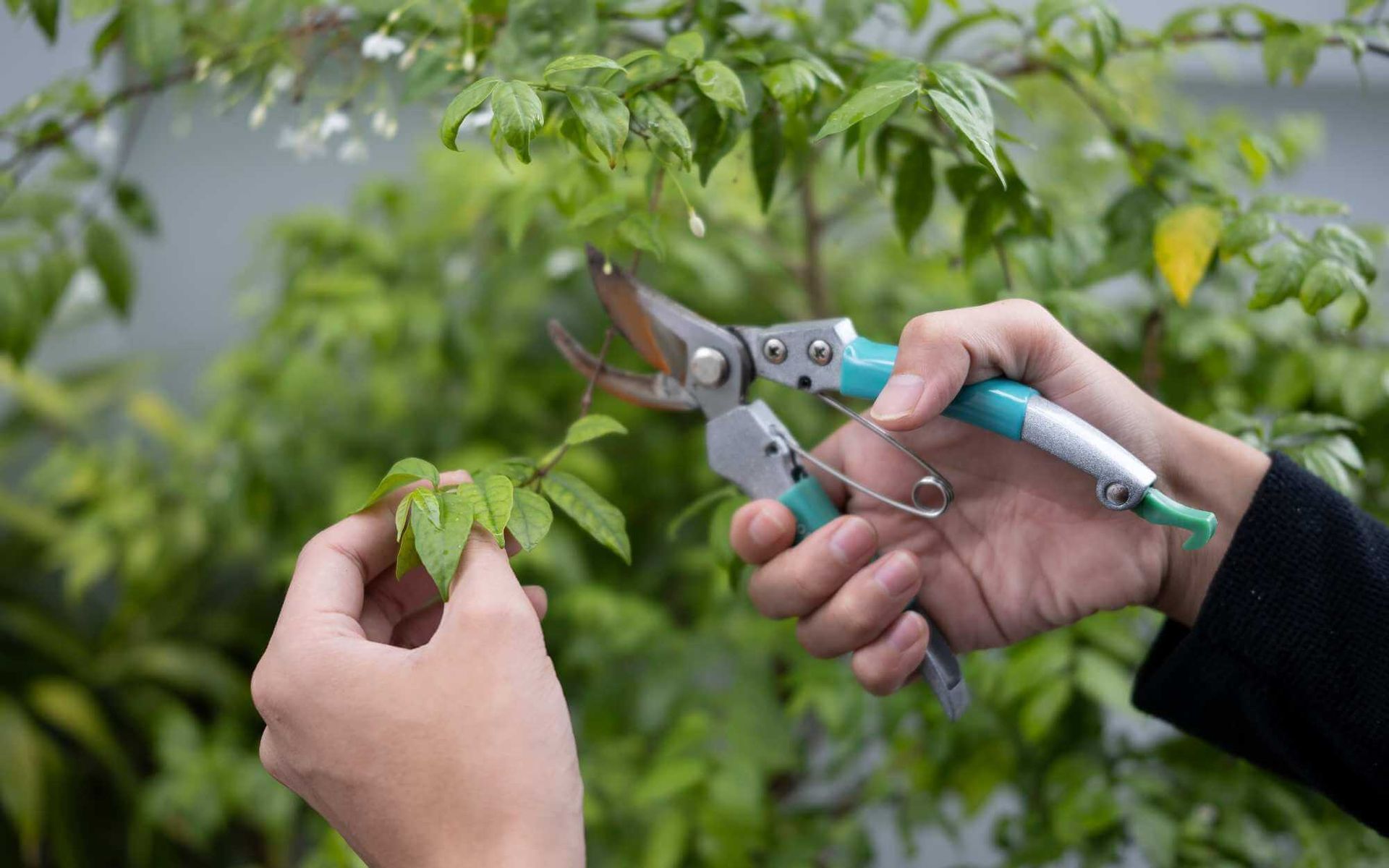Real Tree Team
Arborist, Tree Service and Tree Removal Services
License #: FL-10250A
CALL FOR A FREE QUOTE!
The Expert's Guide to Fruit Tree Pruning for Increased Yields
PUBLISHED ON
SHARE THIS ARTICLE

Welcome to our comprehensive guide designed to illuminate the art and science of fruit tree pruning.
Many amateur and even experienced gardeners overlook this crucial aspect of fruit tree care, but proper pruning is integral to not only maintaining the health of your trees but also maximizing their fruit-bearing potential.
Cutting back branches may seem counterintuitive, yet this purposeful act stimulates growth, increases sunlight exposure, and promotes better air circulation — all key factors that contribute to a bountiful harvest.
Dive into this guide to learn how you can optimize your fruit tree yields through strategic pruning.
Basic Principles of Fruit Tree Pruning
Understanding tree structure and growth habits is foundational to effective pruning. Each tree species has a unique growth pattern, but generally, new growth emerges from buds located on lateral branches.
Identifying and removing damaged or diseased branches is key to maintaining tree health and preventing infections from spreading. Diseased branches often show signs like discoloration, deformities, or fungal growth.
Proper management of tree height and canopy density enhances sunlight penetration and air circulation, fostering an environment conducive to fruit production. However, excessive trimming can be detrimental, so maintaining a balance is crucial.
Pruning should be executed strategically, with the tree's overall health and fruit-bearing potential as the primary factors guiding your decisions.
Benefits of Fruit Tree Pruning

Pruning your fruit trees offers three main benefits: enhancing tree health, improving fruit quality, and increasing yields.
- Enhances Overall Tree Health and Vitality: Pruning is not merely an aesthetic practice. It enhances overall tree health by removing dead, diseased, or weak branches, thereby reducing the risk of infection and promoting stronger, more resilient growth.
- Promotes Better Fruit Quality and Size: By minimizing competition for sunlight and resources, pruning ensures each fruit receives what it needs for the growing season. This results in larger fruits with better quality, taste, and nutritional value.
- Increases Fruit Production and Yields: Strategic pruning stimulates the growth of new fruit-bearing branches and prevents over-exhaustion of the tree's resources. Consequently, it leads to an increase in the quantity of fruits produced, maximizing your harvest each season.
Techniques for Fruit Tree Pruning
Fruit tree pruning can be achieved using various techniques, each designed to serve a specific purpose.
- Selective Thinning: This technique involves removing select branches to reduce the density of the canopy. By thinning cuts, light penetration and airflow are improved, which are essential components of effective photosynthesis and prevention of diseases and pests.
- Proper Branch Angle and Direction: Branches with a wide angle from the trunk, typically 45 to 60 degrees, bear more fruit. Ensuring branches grow in the correct direction and angle promotes optimal fruiting, as it affects the tree's balance, sunlight exposure, and future growth.
- Pruning Timing and Frequency: The timing and frequency of pruning depend on the tree's type and health. Typically, pruning is done in late winter or early spring before new growth begins. However, some trees benefit from summer pruning to limit vigorous growth and redirect energy to fruit production.
Tools and Equipment for Fruit Tree Pruning

As with any task, having the right tools makes all the difference in efficiency and effectiveness. The essential items you'll need for fruit tree pruning include:
- Pruning Shears: These are handheld scissors used to cut small branches.
- Loppers: A longer version of pruning shears, loppers feature scissor-like blades designed to cut thicker branches with more precision.
- Pruning Saws: For larger and harder-to-reach branches, pruning saws are your best bet. They come in various shapes and sizes for different types of cuts.
- Pole Pruners: As the name suggests, pole pruners allow you to reach high branches without using a ladder by attaching a saw or shears to an extendable pole.
Tips for Successful Fruit Tree Pruning
Considerations for Different Fruit Tree Varieties:
- Apple Trees: Prune in late winter. Remove vertical branches and aim to create an open goblet shape to allow good light penetration.
- Peach Trees: They require more pruning than most fruit trees. Aim to create an open center for light exposure and air circulation.
- Cherry Trees: These trees don't require heavy dormant pruning. Trim only for shaping or to remove dead or diseased branches.
- Pear Trees: Prune in winter since it's their dormant season. Focus on removing dead or damaged branches and shaping the tree for better fruit production.
- Plum Trees: The ideal time to prune is in late winter or early spring before new growth begins. Remove any crossed or crowded branches and aim for an open shape in the center of the tree.
Common Mistakes to Avoid:
- Over-pruning: Removing too much at once can stress the tree. Never remove more than 25% of the tree's canopy in a single season.
- Wrong Timing: Late winter or early spring is generally the best time for pruning. Pruning in late summer or fall can make trees vulnerable to disease or winter injury.
- Leaving Stub: Always prune back to a bud or branch. Leaving stubs can lead to disease and insect problems.
Maintenance and Care after Pruning:
- Sterilize Tools: Always clean and sterilize pruning tools after use to prevent the spread of disease.
- Tree Protection: In the case of heavy pruning, protect trees by painting the cut areas with a tree wound dressing.
- Monitor Tree Health: Keep an eye on the tree's health after pruning. Watch for signs of disease or pest infestation and treat promptly if needed.
Bountiful Branches, Fruitful Harvest
Fruit tree pruning is essential, offering benefits including improved tree health, enhanced fruit quality, and increased yields. Implementing proper pruning techniques can maximize your tree’s potential and contribute to fruitful harvests.
Remember, every tree is unique and may require a tailored approach. If in doubt, don't hesitate to contact a
tree care expert to guide you and ensure your trees thrive.
Want a free quote or some friendly advice? Call our team today:
More Posts From The Real Tree Blog:
ISA Certified Arborists. Licensed, Insured and Bonded.
Providing the Highest Quality Tree Services to South Florida since 1993.
FOLLOW US ON :
Contact Details
BROWARD & PALM BEACH COUNTIES
Site Links

LGBTQ+ Friendly

ISA Certified Arborist®
FL-10250A
| Real Tree Trimming & Landscaping, Inc




